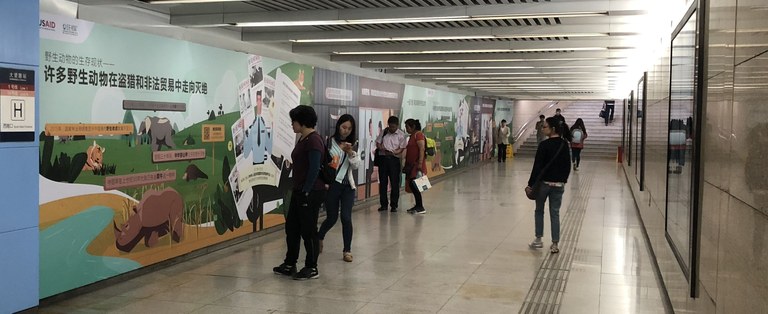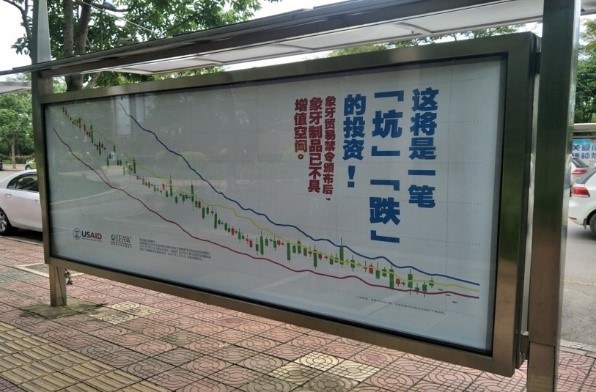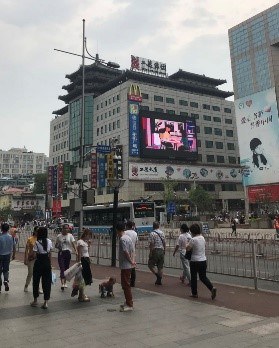USAID Wildlife Asia’s Wildlife Protection Law Campaign in China leverages nearly $4.4 million
The WPL videos leveraged an equivalent of $3.4 million in counterpart funds from free placements and media discounts from offline, online and inflight channels. The WPL videos have been shown in more than 13,000 TV/LCD/LED screens in office buildings, banks, shopping centers and upscale restaurants of four major cities: Beijing, Shanghai, Guangzhou and Shenzhen. These materials were also shown in zoos, museums and libraries in Beijing, Tianjin and Chengdu. These locations were selected since they are regularly visited by the target audience (upper middle-class/upper class consumers) as they go about their daily lives.
To reach travelers, the video was shown in the airports of eight cities (Shenzhen, Hangzhou, Xiamen, Zhengzhou, Xi'an, Jinan, Dalian and Haikou) and on over 1,500 international and domestic flights of four Chinese airlines namely China Southern Airlines, China Eastern Airlines, Shanghai Airlines and Xiamen Airlines. This in-flight promotion reached more than 30 million passengers in three months. The video was also shown in online video sites (like YouTube and Hulu). By the end of September, the online video had been watched by more than 16 million people with more than 430,000 further actions including clicks, comments, likes and forwards.

The giant (31.45m x 2.27m) WPL wall poster leveraged $330,000 in-kind support. This wall poster was placed in a very busy, high traffic transfer station connecting Metro L1 and L14 in Beijing from May 22 to August 30, 2018. This poster had a QR code that passengers could scan using their WeChat app, directing them to the full video posted on Tencent Video. This poster generated 28 million impressions, or number of accounts that the video reached. It also garnered 345 QR code scans from those who wanted to see the WPL video.
By the end of October 2018, the WPL and Ivory Ban PSAs have generated $650,000 in-kind support. These PSAs were shown on more than 500 buses in Beijing and 120 bus stops in Guangzhou, Shenzhen, Nanning and Kunming. The print PSAs generated more than 192 million impressions. The PSAs were also promoted through 17 mobile apps intended for selected target audiences. The use of the apps obtained more than 16 million online impressions.

To gauge the reach and effectiveness of the WPL Promotion Campaign, USAID Wildlife Asia conducted an online survey in October 2018 through IFAW’s official WeChat account. The project team collected and analyzed 411 eligible responses. The survey revealed that 30 percent of respondents recalled seeing campaign materials before, suggesting that the campaign has achieved widespread reach. Further analyses of the impact on WPL awareness raising and change in desired attitudes of the target audience will be conducted and reported at the end of the campaign.


